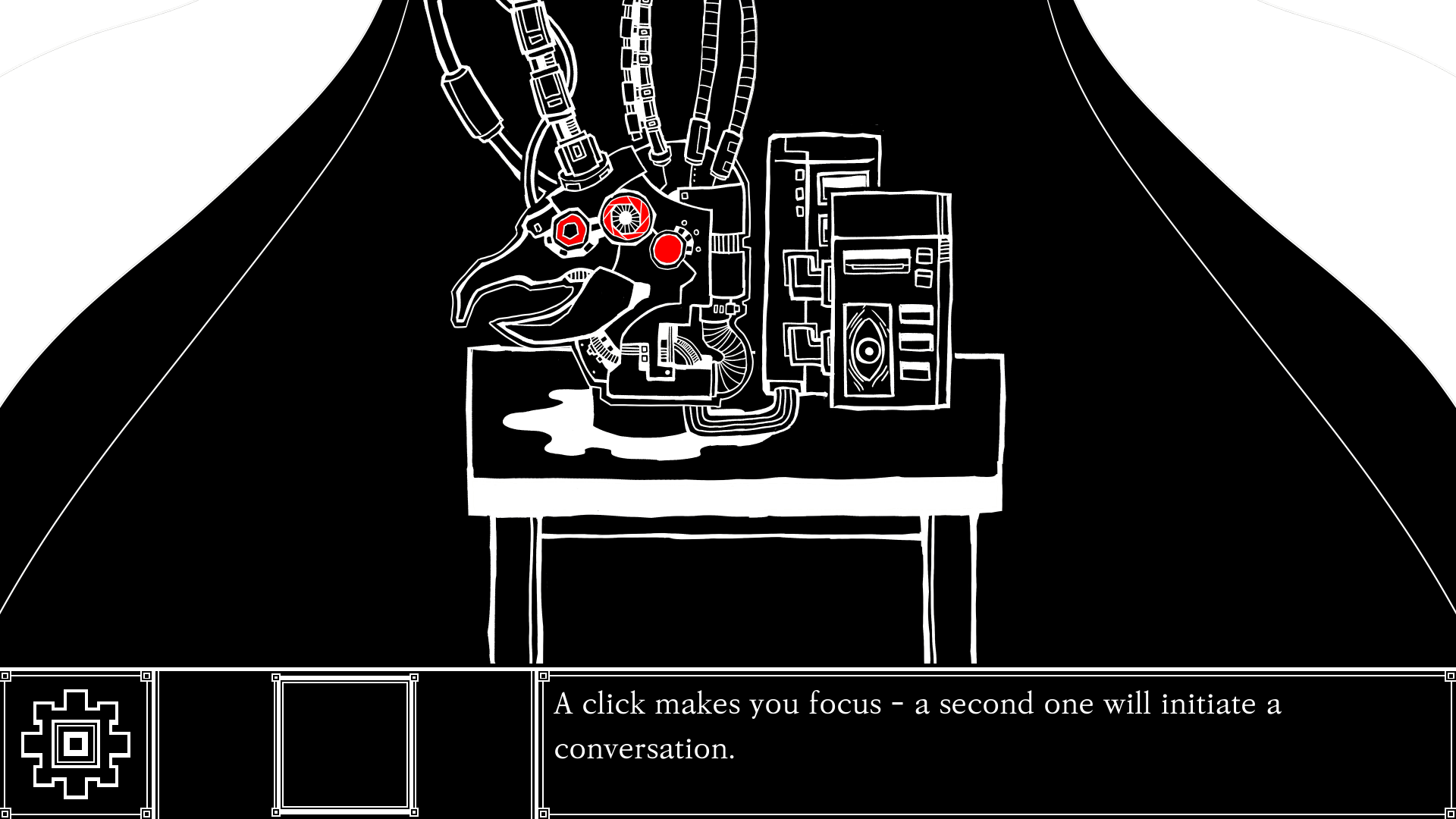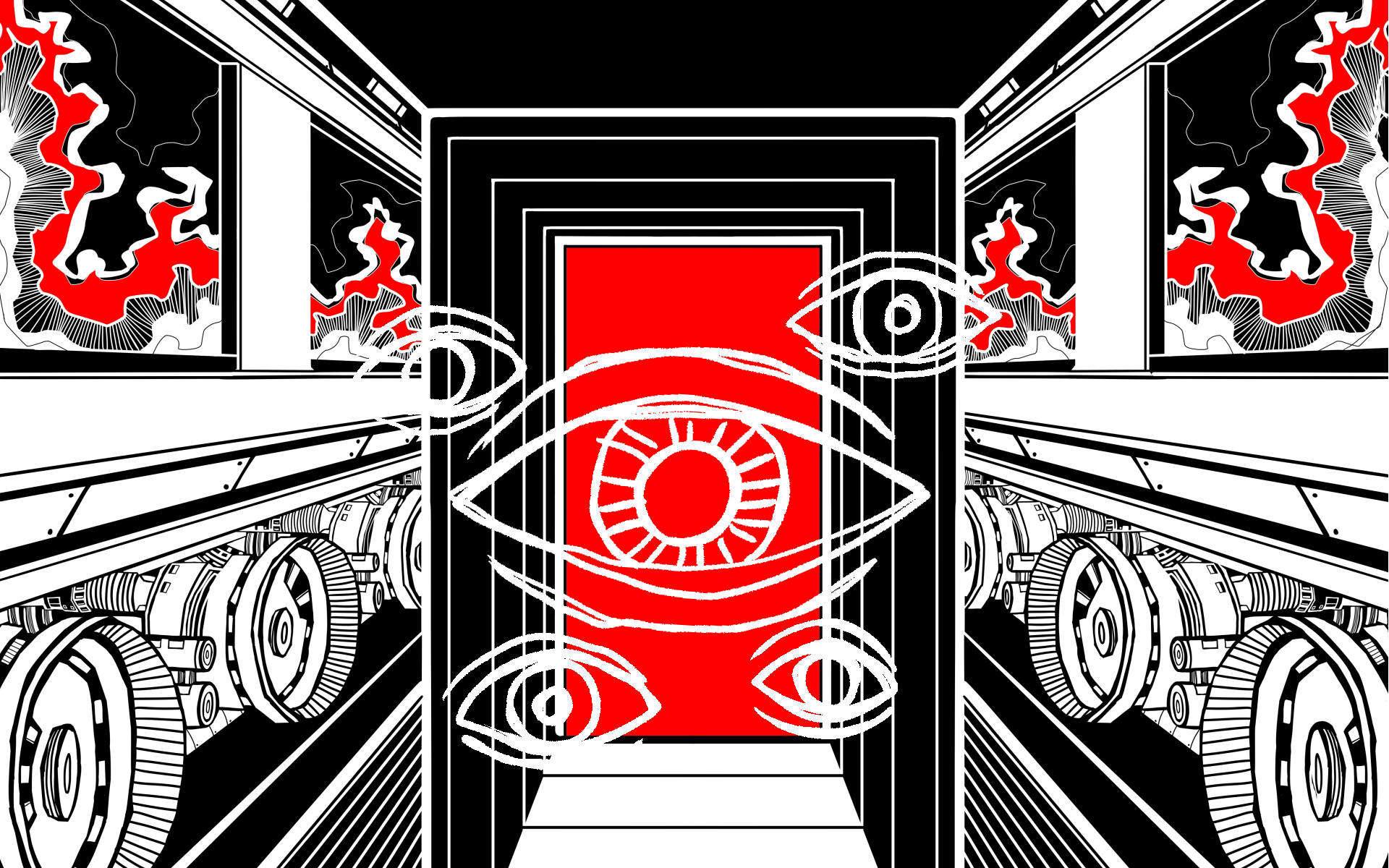The Fire Nobody Started_LOG#1
1. Programming, Puzzles, and the Issues of Skill and Time
The first thing set in stone was the story, but a story alone doesn’t make a game. A game, at its core, is built through interaction with the player. Without a properly designed system, no matter how good the story is, it cannot be expressed as a game.
The first idea that came to mind was a point-and-click puzzle game in the style of the Rusty Lake series. It’s a series I personally enjoy, and since all my previous projects had been story-driven games, I wasn’t confident in developing a more complex system. I thought this level of complexity would be sufficient. However, in the end, the system I created turned out to be far simpler than I initially planned.
The biggest reason was time. I had to handle most of the work alone. At the time, I was also in graduate school, meaning I had just under a year to dedicate to this project. Creating high-quality puzzles would require a much larger volume of graphical assets, and given the time constraints, I decided that rather than producing something of subpar quality, I would simplify the gameplay instead.
Another major factor was my own programming limitations. While I majored in programming, I had never learned Unity in university, meaning I had to teach myself everything from scratch. (Of course, if I hadn’t studied programming at all, it would have taken even longer.) Before this project, I had only ever used the RPG Maker series, so I never imagined that something as fundamental as a save system would be so complicated to implement. I simply wasn’t confident in creating a puzzle system that worked without issues.
And so, here we are. I still feel like my game is incomplete, like only half of what I envisioned made it into the final product. But isn’t a finished half-game better than an unfinished full one?
2. Delivering the Story
Given these constraints, I decided to create a much simpler, text-focused game system.

Since I was using the Adventure Creator asset, I structured the UI based on its default elements. For gameplay, I kept point-and-click interactions, but limited their use to picking up and using items, as well as conversations with characters.
One of the more spontaneous ideas I implemented while restructuring the UI was reducing the visible item slots to just one and using the remaining space for additional text display. At the time, I had no idea what I would put there. Later, when deciding its function, the process was just as impulsive:
"Maybe a simple description of the item? Oh, how about a short description of the characters too? Yeah, let’s do that!"
The funny thing is, this tiny text feature in the lower-right corner took far more time and effort to implement than I expected. I was sure it would be quick and easy. But, as it turns out, life doesn’t always go the way I think it will.
That said, the time spent was worth it. The additional text display acted like a narrator, allowing me to break free from the limitations of purely dialogue-based storytelling. It opened up possibilities for more diverse narrative techniques. What kind of techniques, you ask? Well, you’ll have to check out the full game when it launches!
Here’s the Steam page link! : https://store.steampowered.com/app/3282210/The_Fire_Nobody_Started/
1. 프로그래밍, 퍼즐, 그리고 능력과 시간의 문제
가장 먼저 정해진 것은 스토리였지만, 스토리만으로는 게임을 만들 수 없습니다. 게임이란 결국 플레이어와의 상호작용을 통해 이루어지는 것이기 때문에 그 시스템이 설계되지 않으면 아무리 좋은 스토리라도 게임으로 이를 표현할 수 없습니다.
제가 가장 먼저 떠올린 것은 Rusty Lake 시리즈 스타일의 포인트 앤 클릭 퍼즐 게임이었습니다. 일단 제가 좋아하는 시리즈이기도 했고, 저는 여태껏 스토리 위주의 게임 만을 기획해왔기 때문에 그보다 더 복잡한 시스템의 게임을 제작할 자신이 없었기 때문입니다. 저는 이 정도 수준이라면 충분할 것이라고 생각했지만. 결과적으로는 이것보다 훨씬 단순화된 시스템을 만들게 되었습니다.
가장 큰 이유는 시간입니다. 저는 거의 대부분의 작업을 혼자 진행해야 했습니다. 당시 대학원에 다니는 중이었고, 제가 할애할 수 있는 시간은 1년보다 조금 더 안되었습니다. 고품질의 퍼즐을 제공하기 위해서는 더 많은 양의 그래픽 에셋이 필요하다는 결론이 나왔고, 저는 시간 문제로 인해 제가 원하는 퀄리티의 결과물을 만들지 못할 바에는 결과물을 더 단순화 하는 것이 낫다는 결론을 내렸습니다.
제 프로그래밍 실력이 모자라다는 점도 한 몫 하였습니다. 저는 프로그래밍 관련 학과를 나왔지만 대학에서 유니티를 배운 적은 없었기 때문에 모든 것을 처음부터 배워야 했습니다. (대학에서 프로그래밍을 배우지 않았더라면 더 많은 시간이 걸렸겠지요.) 전 말이죠, 그러니까… RPG MAKER 시리즈 만을 사용해보았기 때문에 저장 시스템을 만드는 것이 이렇게 복잡할 것이라는 생각은 꿈에도 하지 못하였습니다. 복잡한 퍼즐이 문제 없이 돌아가는 시스템을 만들어낼 자신이 없었습니다.
그래서, 이렇게 되었습니다. 저는 아직도 제 게임이 반쪽짜리라고 느끼곤 합니다만, 완성되지 못한 게임보단 완성된 반쪽 게임이 훨씬 낫지 않겠습니까?
2. 스토리를 전달하는 방식
그리하여, 저는 훨씬 더 텍스트에 집중한 - 단순해진! - 게임 시스템을 만들기로 하였습니다.

저는 Adventure Creator 에셋을 사용하고 있었기 때문에, 이 에셋에서 기본적으로 제공하는 UI를 기반으로 하여 UI를 구성하고, 시스템의 경우 포인트 앤 클릭은 남겨두되 아이템 획득과 사용, 캐릭터와의 대화에만 사용하도록 하였습니다.
UI를 재구성하면서 즉흥적으로 적용했던 아이디어 중 하나는 플레이어에게 보이는 아이템 슬롯 개수를 하나로 줄여버리되, 남는 자리에 텍스트를 띄울 수 있는 또 하나의 공간을 만드는 것이었습니다. 당시에는 이 공간에 뭘 넣을지에 대해 아무것도 생각하지 않았습니다. 이후 공간의 기능을 정할 때도 매우 즉흥적이었습니다. 아이템에 대한 간단한 설명? 인물에 대한 간단한 설명도 괜찮겠네! 그럼 그렇게 해보자!
우스운 점은, 저 우측 하단의 텍스트 기능을 구현하기 위해 예상한 것 보다 훨씬 더 많은 시간과 노력이 들어갔다는 사실입니다. 분명 훨씬 쉽고 단순하리라고 생각했는데. 인생이 항상 제가 생각하는대로 돌아가지는 않는 모양입니다.
하지만 이렇게 만들어진 부속 텍스트 공간은 들인 시간 이상의 효과를 주었다고 생각합니다. 이 공간에서 표시되는 텍스트들은 일종의 나레이터처럼 기능하게 되었고, 이 덕에 대화 형식이라는 제약에서 벗어나 조금 더 다양한 연출을 시도할 수 있었습니다. 정확히 어떤 느낌의 연출이냐고요? 곧 공개될 게임 본편에서 확인해보시죠! 여기 스팀 페이지 링크가 있습니다! : https://store.steampowered.com/app/3282210/The_Fire_Nobody_Started/
Get The Fire Nobody Started
The Fire Nobody Started
Nobody Started the Fire, But It Still Consumes the World
| Status | In development |
| Author | Arrokoth486958 |
| Genre | Interactive Fiction, Adventure |
| Tags | 2D, artgame, Atmospheric, Historical, Point & Click, storygame, Story Rich |
| Languages | English, Korean |
| Accessibility | Subtitles, One button |
More posts
- The Fire Nobody Started_LOG#0Feb 13, 2025

Leave a comment
Log in with itch.io to leave a comment.